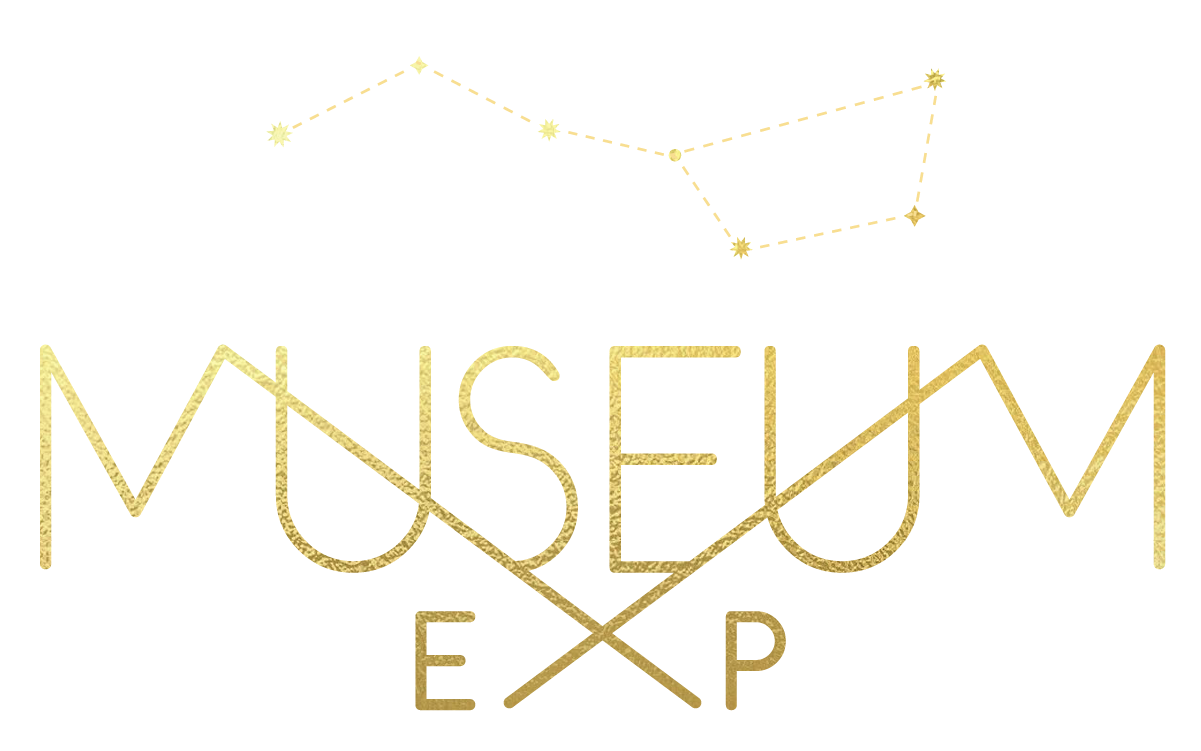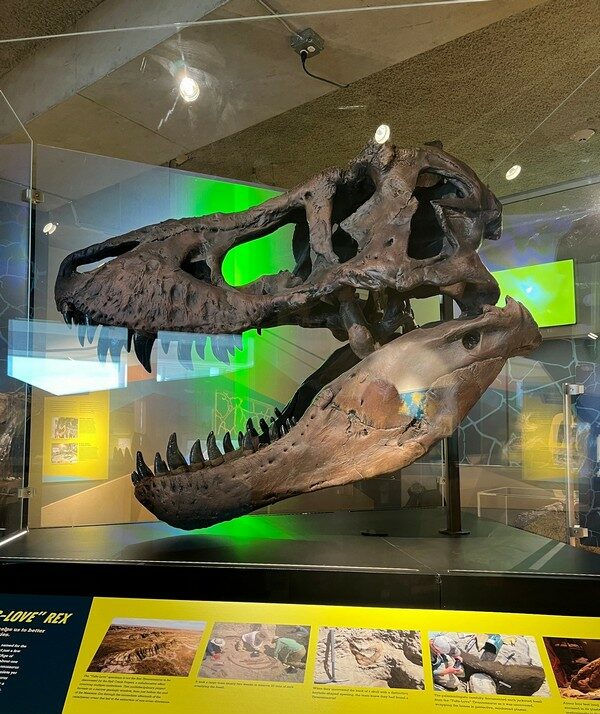Creating Big Impact in a Small Exhibit Space
You probably don’t associate dinosaurs with South Florida. As Florida was completely underwater during the “age of the dinosaurs,” many of the local universities and organizations focus on other areas of study. Establishing the first paleontology research program at Phillip and Patricia Frost Museum of Science has immense possibilities for the future of this field of study, but to also engage and excite the next generation of scientists. Frost Science’s new PaleoLab and accompanying exhibit, The Dig delivers on this mission. The Frost Science team collaborated with Museum EXP to create an experience that was engaging, reflected the latest paleo research, and maximized their available space.
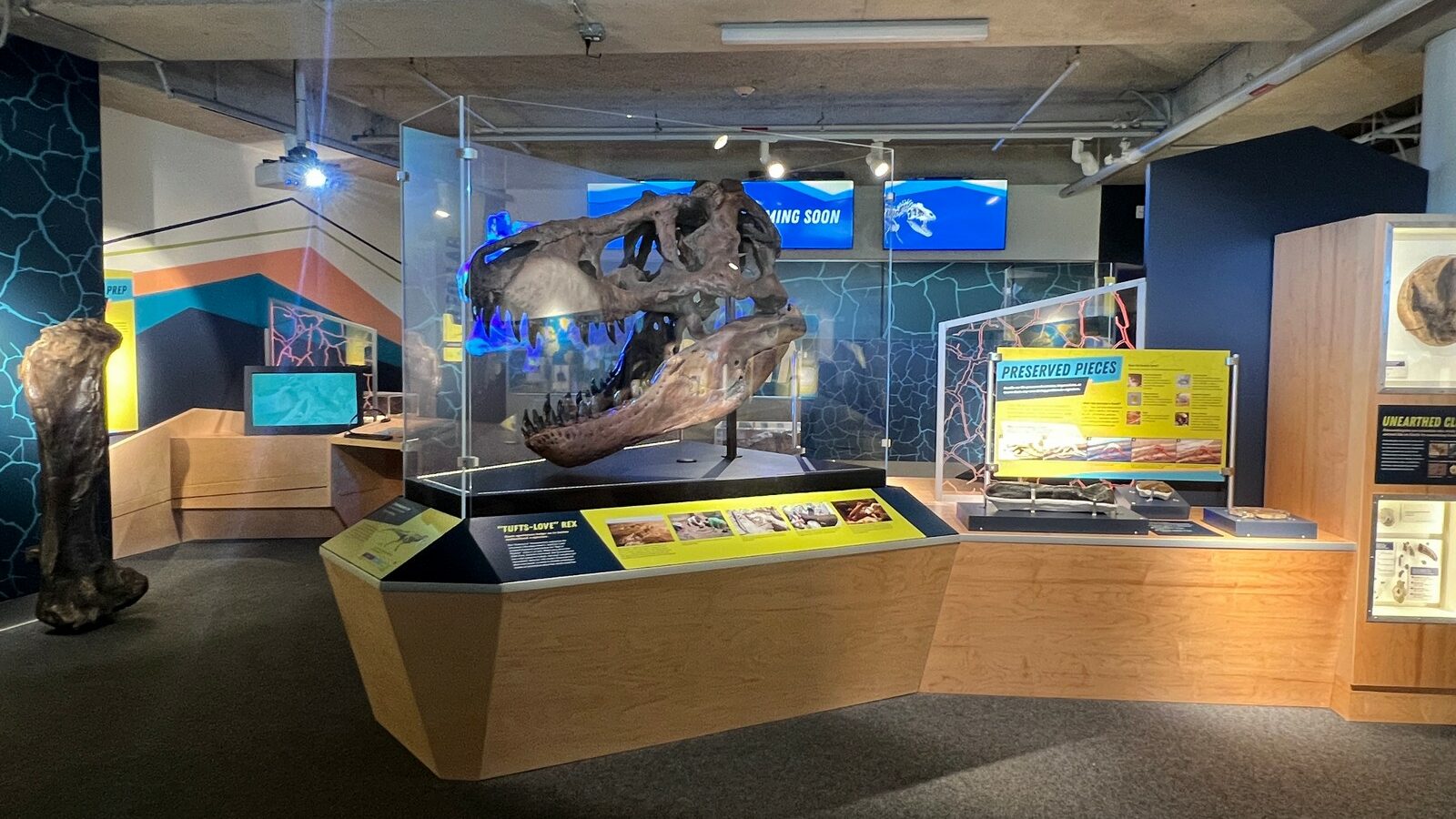
Layered Understanding
The field of paleontology is only about 200 years old—and new discoveries are being made all the time. It was important to the Frost Science team that visitors see these discoveries not as dusty relics, but as time capsules that help us to understand the world around us. Our project team worked closely with Frost Science paleontologist, Dr. Cary Woodruff, to break down the current academic research into easy to understand graphics using simple language, illustrations, models, touchable fossils, and accompanying interactive opportunities. As the available space was only 900 square feet with a limited budget, our team had to be creative and decisive in how we layered all of these elements to create a cohesive and compelling visitor experience.
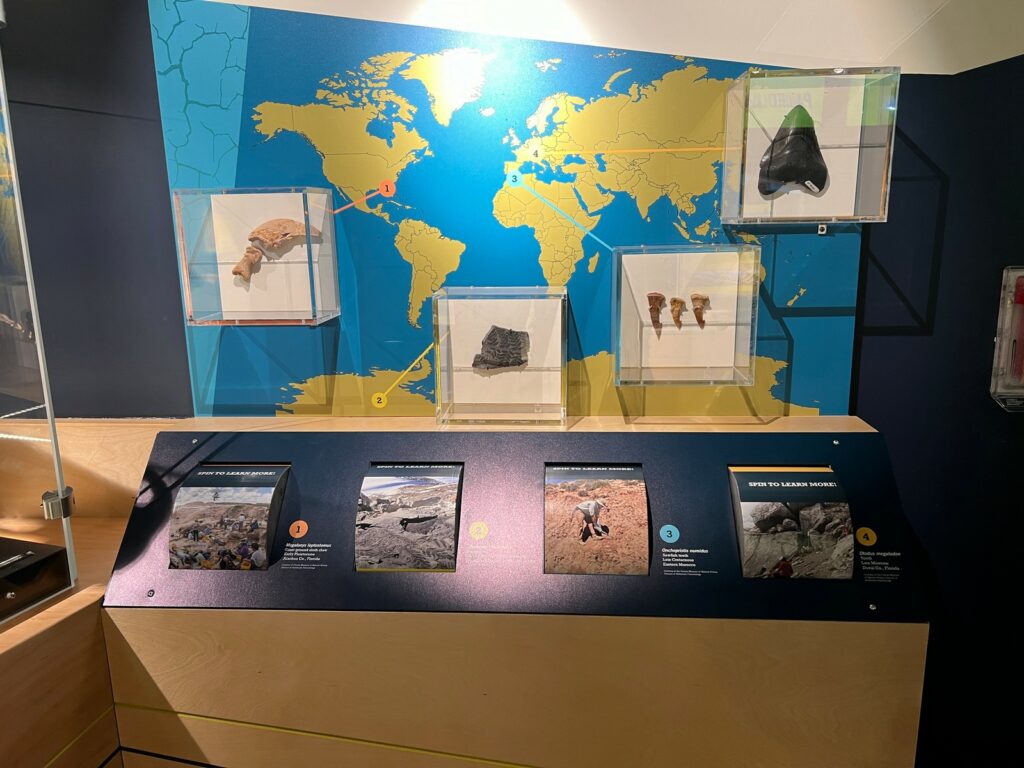
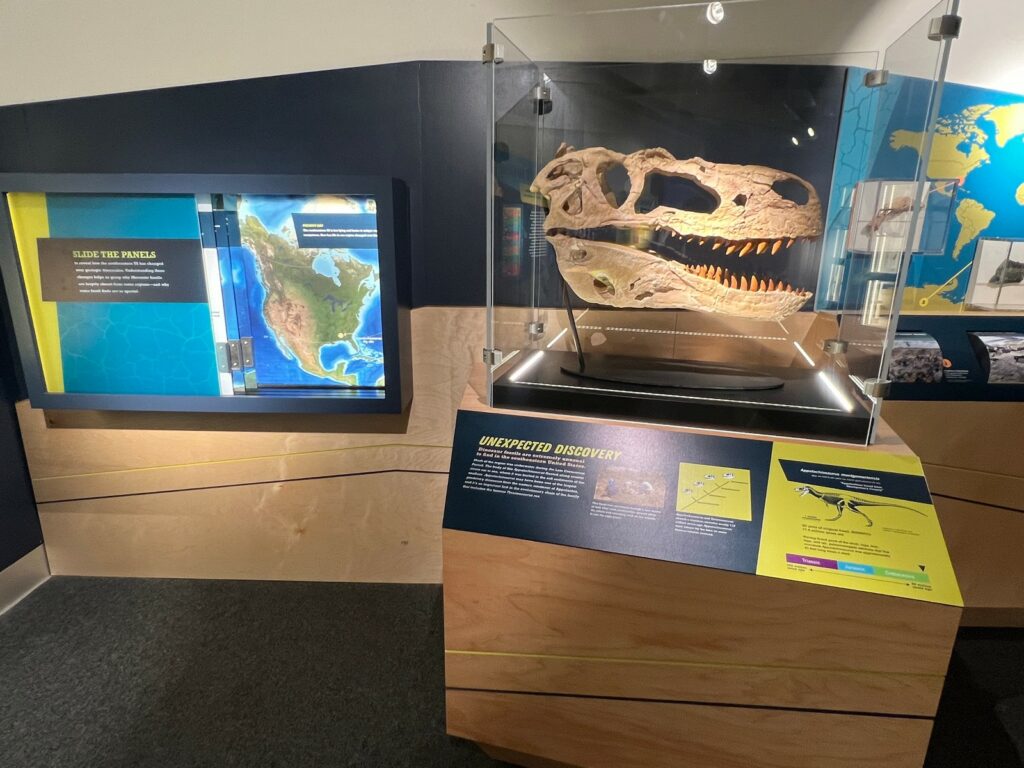
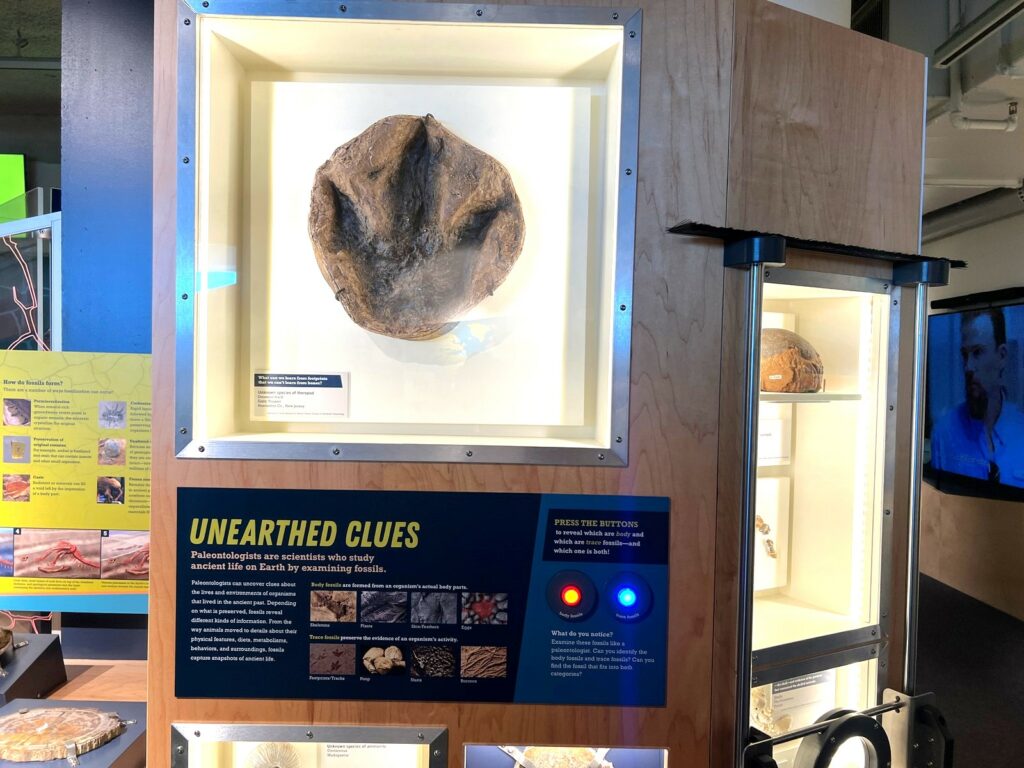
Hands-On Isn’t Always High-Tech
As museum junkies, we understand the value of interactive experiences and know that interactivity doesn’t always have to be complex or expensive. We worked with the Frost Science team to incorporate a number of simple hands-on experiences that engage visitors and enhance learning. Visitors can spin rollers to show surprising fossil finds, slide backlit graphics to uncover the landscape of a changing planet, or check their assumptions on fossil type with a colored reveal through a lighting effect.
But we didn’t shy away from technology when it is appropriate—this is Miami after all! Visitors can get a feel (literally) for using an air scribe tool to remove matrix from a sauropod specimen. When used on a touchscreen, the stylus vibrates and shows rock being removed to prepare a fossil. Thanks to our friends from The Children’s Museum of Indianapolis for developing this interactive!
At another station, touching a bronze fossil model triggers on-screen graphics that highlight current research on four different dinosaur species. A holographic projection displays 3D and CT scan data of a T.rex alongside a cast of the “Tufts-Love” T.rex skull.
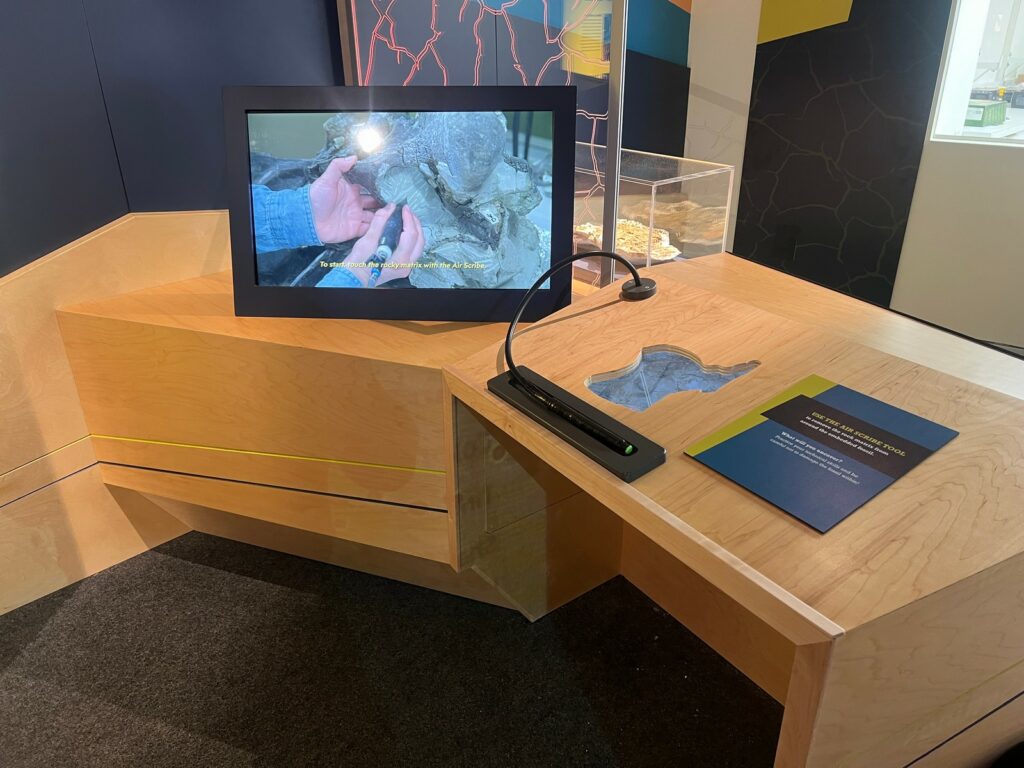
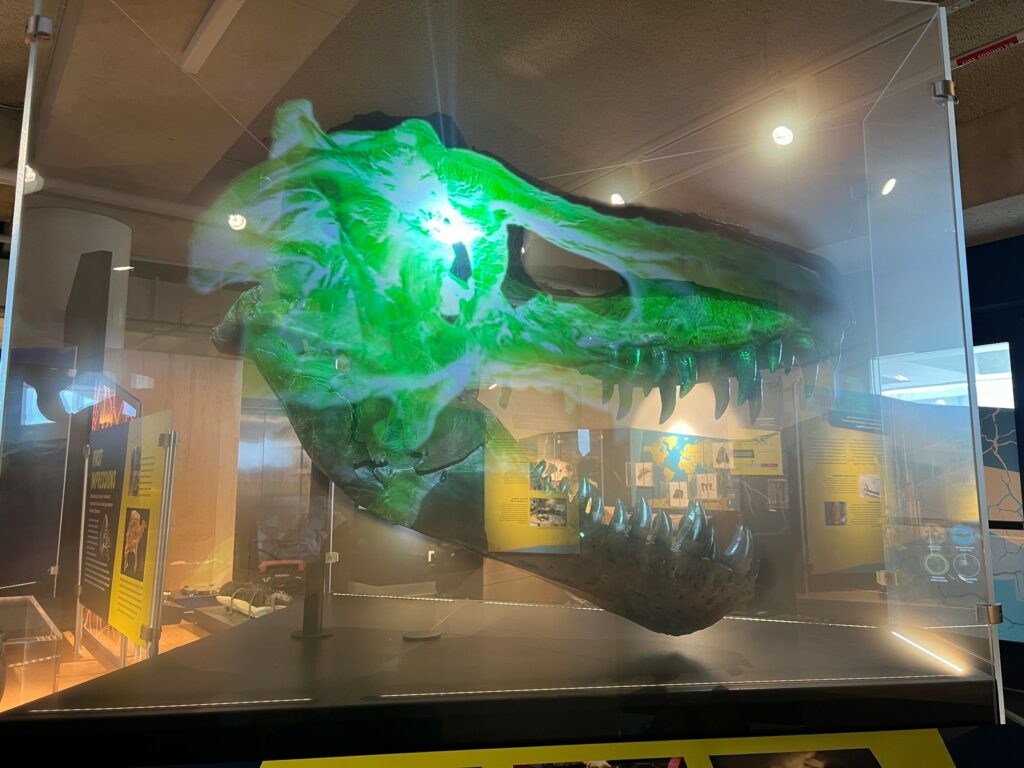
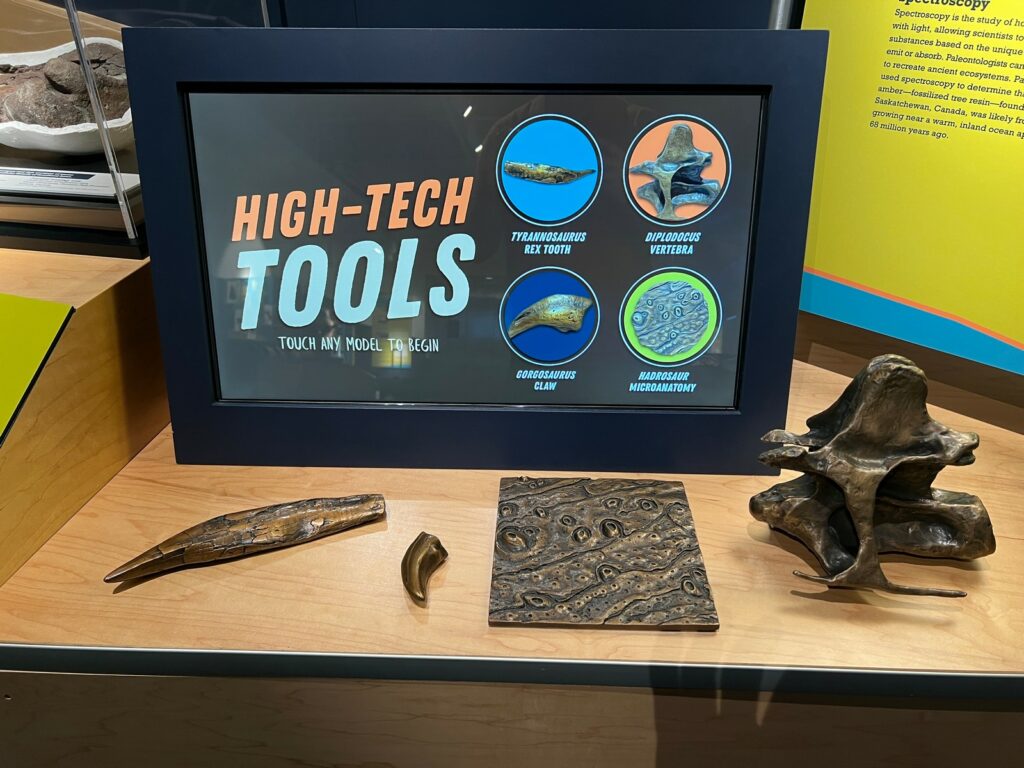
Future Proofed
This exhibit is just the beginning. The museum has collected dozens of new specimens that will be processed within the new PaleoLab—and will reveal their own secrets over time. Like most of our projects, these exhibits can evolve with the museum’s changing needs. The cabinetry is modular so that it can be reconfigured in the future, digital content and graphics can be easily updated, and new specimens can replace those currently on display. We can’t wait to see what new discoveries unfold next!
Thank You to Our Collaborators
- Crabby Badger Studios
- Tilt23 Studios
- Research Casting International
- Gabriel Ugueto
- Nathan Rogers
- Dr. Scott Hartman
- The Children’s Museum of Indianapolis
- The Franklin Institute
- Burke Museum of Natural History & Culture
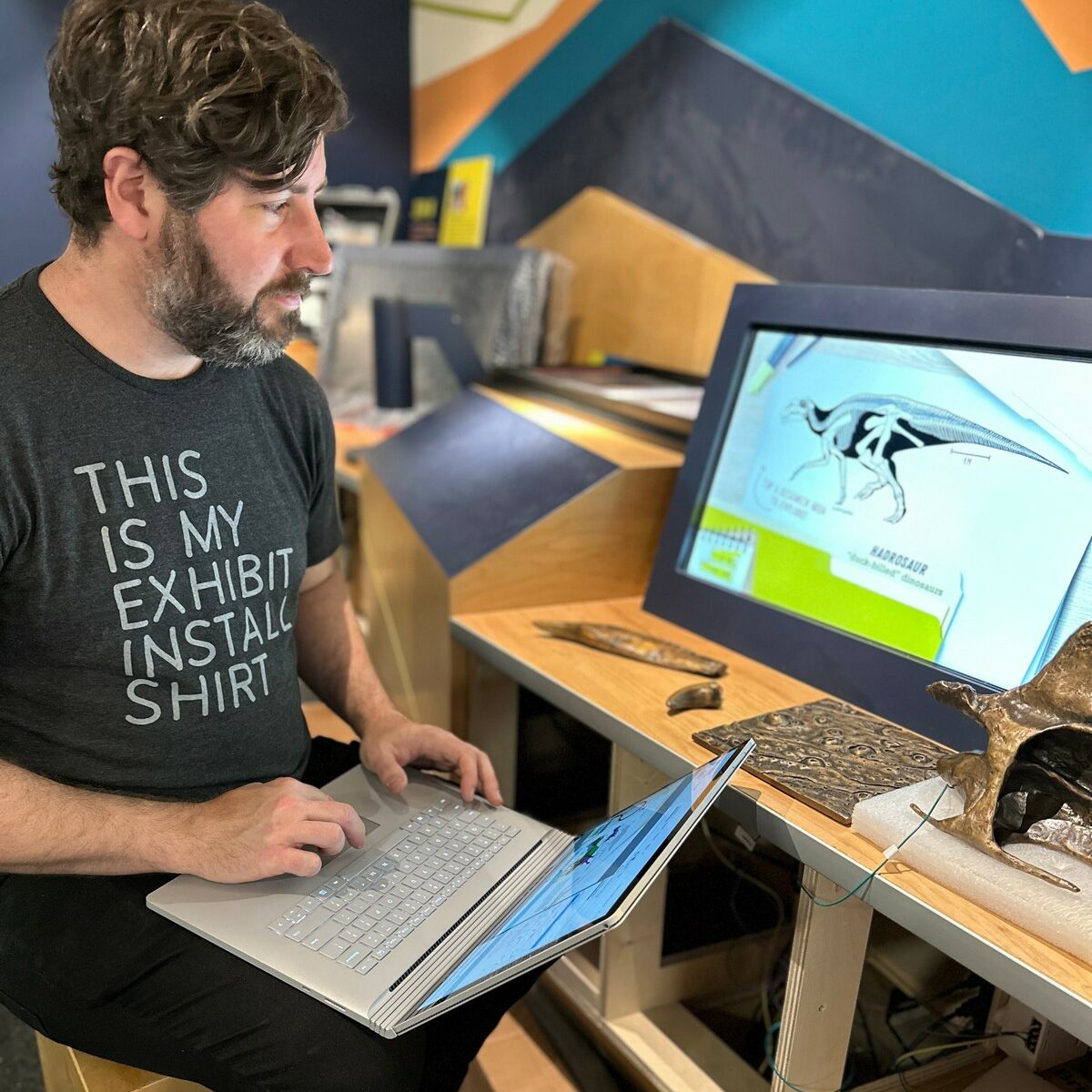
Do you want to snag a sweet installation shirt like John is wearing? Check out The Emporium. All purchases support scholarships for emerging and mid-career exhibits professionals to attend conferences!
